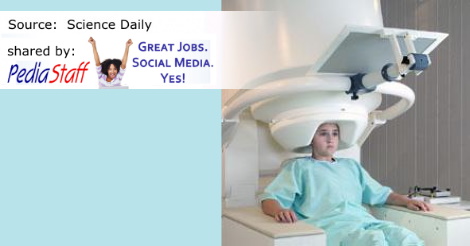Difficulty Learning Nonsense Words May Indicate a Child’s High Risk of Dyslexia

[Source: Science Daily]
A combined brain-scanning and behavior study has explored dyslexia in 7 & 8-year-old children learning how to read. Dyslexic youngsters were shown to have different activation in the left hemisphere compared to the control group – the area of the brain that specializes in processing language and speech. A related study by the group also found that self-confidence in reading ability helps young readers overcome some of the symptoms of dyslexia.
Researchers at Aalto University and the Niilo Mäki Institute have used neuroimaging to pinpoint where the brain activates — or doesn’t activate — among children identified as having a high risk of dyslexia. Magnetoencephalography (MEG) has rarely been used to study the reading disorder in children.
PediaStaff is Hiring!
All JobsPediaStaff hires pediatric and school-based professionals nationwide for contract assignments of 2 to 12 months. We also help clinics, hospitals, schools, and home health agencies to find and hire these professionals directly. We work with Speech-Language Pathologists, Occupational and Physical Therapists, School Psychologists, and others in pediatric therapy and education.
